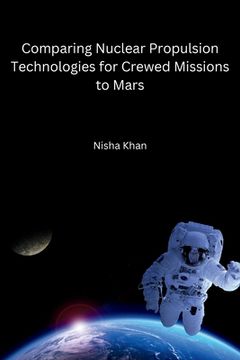Comparing Nuclear Propulsion Technologies for Crewed Missions to Mars (in English)
Synopsis "Comparing Nuclear Propulsion Technologies for Crewed Missions to Mars (in English)"
Comparing Nuclear Propulsion Technologies for Crewed Missions to MarsCurrent chemical propulsion systems are limited in their ability to support crewed missions to Mars due to their low propellant efficiency and long mission times. Nuclear propulsion technologies offer a potential solution to these challenges, as they are capable of producing higher thrust and propellant efficiency than chemical rockets.This paper compares three nuclear propulsion technologies for crewed missions to Mars: nuclear electric propulsion (NEP), nuclear thermal propulsion (NTP), and nuclear fusion propulsion (NFP). Each technology has its own advantages and disadvantages, and the best choice for a crewed Mars mission will depend on a number of factors, including mission requirements, cost, and risk.NEP systems are the most mature of the three technologies, and they have already been used successfully in a number of space missions. NEP systems use a nuclear reactor to generate electricity, which is then used to power an electric thruster. NEP systems are very efficient, but they produce relatively low thrust. As a result, NEP systems require longer mission times than other nuclear propulsion technologies.NTP systems are less mature than NEP systems, but they offer the potential for higher thrust and shorter mission times. NTP systems use a nuclear reactor to heat a propellant gas, which is then expelled through a nozzle to produce thrust. NTP systems are more efficient than chemical rockets, but they are also more complex and expensive to develop.NFP systems are the most advanced of the three technologies, but they are also the most speculative. NFP systems would use the fusion of atomic nuclei to generate energy, which could then be used to power a variety of propulsion systems. NFP systems have the potential to offer even higher thrust and shorter mission times than NTP systems, but they are still in the early stages of development.

